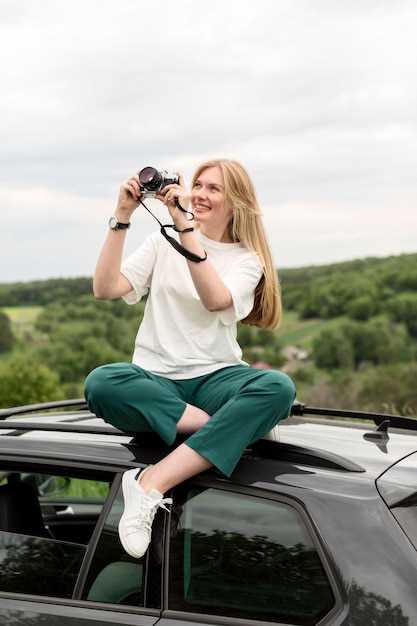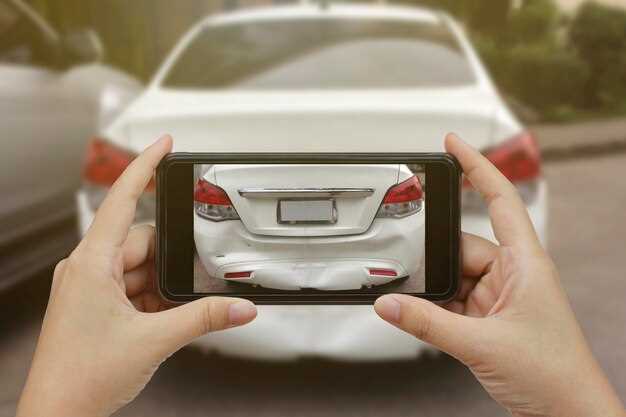
When it comes to selling a vehicle, visuals are everything. A captivating car photo can be the difference between a quick sale and a vehicle that lingers on the market. Potential buyers often make their first judgment based on images alone, so it’s crucial to present your car in the best possible light. This article will provide you with essential tips to capture stunning car photos for your listings.
First and foremost, understanding the right angles can significantly enhance the appeal of your vehicle. Highlighting the car’s best features, from the sleek lines to unique details, can attract potential buyers. Moreover, selecting an appropriate background can help to prevent distractions and keep the focus on your vehicle. A clean, uncluttered environment can complement the car and make your listing stand out.
In addition, lighting plays a crucial role in photography. The golden hour–shortly after sunrise or before sunset–offers soft, diffused lighting that enhances color tones. This natural light can bring out the car’s lustrous finish and help create eye-catching images. Experimenting with different lighting conditions can yield striking results that will set your listing apart.
Choosing the Best Time and Location for Car Photography
Selecting the right time and location for car photography is crucial to achieving stunning results. The perfect setting can enhance the car’s features and create an inviting atmosphere for potential buyers.
First, consider the time of day. The golden hour, which occurs shortly after sunrise and before sunset, provides soft, diffused lighting that minimizes harsh shadows and highlights. This natural light creates a flattering glow on the car’s surface, enriching its colors and details. Avoid mid-day shooting when the sun is directly overhead, as this can produce unflattering glare and overexposed images.
Next, focus on the location. Choose a backdrop that complements the car instead of distracting from it. Urban areas with interesting architecture can add a modern touch, while natural settings like parks or scenic overlooks convey a sense of adventure. Look for locations with minimal clutter in the background to keep the focus on the vehicle. Additionally, consider the road surface–smooth asphalt or gravel can enhance the visual appeal of the car in motion.
It’s also essential to scout your locations in advance. This allows you to find the best angles and backgrounds to suit your specific vehicle. Pay attention to factors such as parking areas, scenic viewpoints, or iconic landmarks. All of these can contribute positively to your photography.
Keep in mind the weather conditions as well. Overcast skies can provide even lighting, which is ideal for highlighting the car’s features without the harsh contrasts of direct sunlight. On the other hand, clear skies can add drama and vibrancy to your shots, particularly for brightly colored cars.
Ultimately, the combination of timing, location, and environmental factors influences the overall quality of your car photos. By carefully choosing when and where to shoot, you can create captivating images that showcase the vehicle effectively, attracting more interest from potential buyers.
Essential Camera Settings for Automotive Photography

When capturing stunning car photos for listings, understanding your camera settings is crucial for achieving professional results. Here are the essential settings you should focus on to enhance your automotive photography.
Aperture (f-stop): Choose a wide aperture, typically between f/2.8 and f/5.6, to create a shallow depth of field. This effect blurs the background, making the car stand out sharply, which is ideal for highlighting specific details in your listing.
Shutter Speed: Use a faster shutter speed, at least 1/500th of a second, especially if you’re photographing moving vehicles. For stationary cars, a slower shutter speed can be effective if you want to capture motion blur by panning the camera along with the subject, adding dynamism to your listing images.
ISO Settings: Keep your ISO as low as possible to reduce noise. Ideally, set your ISO between 100 and 400 in good lighting conditions. In low light, you may need to increase the ISO, but be cautious not to exceed 800 to maintain image quality for your listings.
White Balance: Adjust the white balance based on the lighting conditions. Use the daylight setting for outdoor shoots or the tungsten setting for indoor lighting. Proper white balance ensures accurate color representation of the car, which is essential for an appealing listing.
Focus Mode: Utilize single-point autofocus for precise control over the focus area, especially when you want to highlight specific features of the car. This setting helps avoid any distractions in the frame, ensuring the car remains the focal point of your listing.
Histogram Usage: Monitor the histogram on your camera to ensure you are capturing a well-exposed image. Aim for a balanced histogram, avoiding extremes at both ends, which could indicate underexposure or overexposure. This practice results in high-quality images for your listings.
By mastering these essential camera settings, you’ll be well-equipped to produce stunning car photos that elevate your listings and attract potential buyers.
Post-Processing Techniques to Enhance Car Images

Once you have captured your car images, post-processing becomes essential to elevate their appeal for listings. Utilize software like Adobe Lightroom or Photoshop to apply various enhancements that draw attention to the car’s best features.
1. Color Correction: Adjust the color balance to ensure that the car’s paint appears true to life. Use the white balance tool to correct any unwanted color casts. Emphasize vibrant colors while ensuring they remain realistic to entice potential buyers.
2. Contrast and Brightness: Fine-tuning the contrast and brightness levels can help in making the car stand out. Increasing contrast can add depth and dimension, while adjusting brightness ensures visibility in both shadows and highlights, promoting clarity.
3. Sharpening: Apply a subtle sharpening effect to enhance the details in the car’s exterior and interior. Be cautious not to overdo it, as excessive sharpening can introduce noise and artifacts, detracting from the overall image quality.
4. Cropping and Framing: Consider cropping images to eliminate distracting elements and to focus attention on the car. Utilize the rule of thirds for a more dynamic composition, ensuring the vehicle occupies a compelling position within the frame.
5. Background Enhancement: If the background does not complement the car, consider using blurring techniques to keep the focus on the vehicle. Alternatively, replace a busy background with a simpler, more visually appealing one that suits the car’s aesthetic and listing requirements.
6. Highlighting Features: Use localized adjustments to draw attention to specific features such as wheels, headlights, or the car’s interior. Brightening these areas will guide the viewer’s eye and highlight key selling points in your listing.
7. Consistency: Maintain a consistent editing style across all images in the listing. This consistency helps in creating a professional appearance, making your collection more cohesive and appealing to potential buyers.
Incorporating these post-processing techniques can significantly enhance the quality of your car images, making them more attractive and effective for listings. A polished visual presentation not only captures interest but also helps convey the quality of the vehicle itself.



